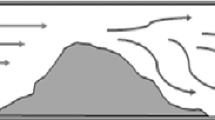Abstract
Bruit analysis (phonoangiography) has been performed for many years as a method of characterizing arterial disease. Time displays of arterial bruits, particularly at the carotid bifurcation, have been used in an attempt to quantitate arterial narrowing. Despite the generalization that longer bruits and bruits which look and sound higher in frequency are often associated with severe disease, prospective studies have shown no useful predictive value for qualitative phonoangiography. In marked contrast, spectral bruit analysis or quantitative phonoangiography has been quite accurate in predicting the location and extent of carotid stenosis, and in distinguishing intrinsic from transmitted bruits. With this method, the peak systolic portion of the bruit is subjected to fast Fourier transform analysis. The peak frequency, beyond which amplitude drops as frequency increases further, is directly related to the residual lumen diameter of the stenotic common or internal carotid artery. Several blinded trials of this method have given results accurate to within 1 mm of angiographic values in 83–93% of cases studied. When used in conjunction with duplex doppler ultrasound scanning, 95% accuracy in diagnosis of patients with and without bruits may be achieved. This completely noninvasive method deserves more widespread use and may also be applicable to other cardiovascular sounds.
Similar content being viewed by others
References
Dewey, C.F., Jr., R.W. Metzinger, and R.S. Lees. A small replicable computer system for clinical analysis. Proceedings of the San Diego Biomedical Symposium. 15:41–50, 1976.
Duncan, G.W., J. Gruber, C.F. Dewey, Jr., G.S. Myers, and R.S. Lees. Evaluation of carotid stenosis by phonoangiography.N. Engl. J. Med. 293:1124–1128, 1975.
Fisher, C.M. Occlusion of the internal carotid artery.Arch. Neurol. Psychiatry 65:346–377, 1951.
Fredberg, J.J.: Pseudo-sound generation at atherosclerotic constrictions in arteries,Bull. Math. Biol. 36:143, 1974.
Fredberg, J.J., R.S. Lees, and C.F. Dewey, Jr. How to listen to your arteries (or what your doctor would hear if he were a fluid dynamicist). Paper No. 70-114, Proceedings, A.I.A.A. Aerospace Sciences Meeting, New York, 1970.
Ginsberg, M.D., et al. Noninvasive diagnosis of extracranial cerebrovascular disease: oculoplethysmography-phonoangiography and directional Doppler ultrasound.Neurology 29:623, 1979.
House, S.L., et al. Noninvasive flow techniques in the diagnosis of cererovascular disease.Surgery 87:696, 1980.
Johnson, G., et al.: Prediction of severity of aortic stenosis by frequency analysis of the murmur.Circulation 60:11–123, 1979.
Johnson, G., et al.: Prediction of severity of aortic stenosis by frequency analysis of the murmur.J. Am. Coll. Cardiol. 1:1315–1322, 1983.
Kartchner, M.M. and L.P. McRae, Auscultation for carotid bruits in cerebrovascular insufficiency.J. Am. Med. Assoc. 201:494, 1969.
Kartchner, M.M., L.P. McRae, and F.D. Morrison. Noninvasive detection and evaluation of carotid occlusive disease,Arch. Surg. 106:528, 1973.
Kistler, J.P., R.S. Lees, J. Friedman, et al.: The bruit of carotid stenosis versus radiated basal heart murmurs: Differentiation by phonoangiography.Circulation 57:975–981, 1978.
Kistler, J.P., R.S. Lees, A. Miller, R.M. Crowell, and G. Roberson. Correlation of spectral phonoangiography and carotid angiography with gross pathology in carotid stenosis.N. Engl. J. Med. 305:417–419, 1981.
Lees, R.S. and C.F. Dewey, Jr. Phonoangiography: A new noninvasive diagnostic method for studying arterial disease.Proc. Nat. Acad. Sci. 67:935–942, 1970.
Lees, R.S., J.P. Kistler, and A. Miller. Quantitative carotid phonoangiography. InNoninvasive Diagnostic Techniques in Vascular Disease, edited by E. Bernstein St. Louis: The C.V. Mosby Co., 1982, pp. 200–207.
Lees, R.S., J.P. Kistler, and D. Sanders. Duplex doppler scanning and spectral bruit analysis offer accurate diagnosis of carotid stenosis.Circulation (Part II) 66:I-102–I-105, 1982.
Lees, R.S., A. Miller, and J.P. Kistler. Quantitative carotid phonoangiography. InThe Investigation of Vascular Disorders, edited by A. Nicholaides and J. Yao. New York: Churchill Livingstone, 1981, pp. 200–207.
Lees, R.S. and G.S. Myers. Noninvasive diagnosis of vascular disease.Adv. Intern. Med. 27:475–509, 1982.
McRae, L.P. and M.M. Kartchner. Oculoplethysmography: Timed comparison of ocular pulses and carotid phonoangiography. InNoninvasive Diagnostic Techniques in Vascular Disease, 2nd edition, edited by E. Bernstein. St. Louis: The C.V. Mosby Co., 1982, pp. 87–103.
Miller, A., R.S. Lees, J.P. Kistler, and W.M. Abbott. Spectral analysis of arterial bruits (phonoangiography): experimental validation.Circulation 61:515–520, 1980.
Miller, A., R.S. Lees, J.P. Kistler, and W.M. Abbott. Effects of surrounding tissue on the sound spectrum of arterial bruits in vivo.Stroke 4:394–398, 1980.
Mohr, J.P., C.M. Fisher, and R.D. Adams. Cerebrovascular diseases. InPrinciples of Internal Medicine, edited by G. W. Thorn. New York: McGraw-Hill Book Co., 1977, pp. 1832–1868.
Strandness, D.E., Jr.: Noninvasive evaluation of arteriosclerosis. Comparison of methods.Arteriosclerosis 3:103–116, 1983.
Author information
Authors and Affiliations
Rights and permissions
About this article
Cite this article
Lees, R.S. Phonoangiography: Qualitative and quantitative. Ann Biomed Eng 12, 55–62 (1984). https://doi.org/10.1007/BF02410291
Issue Date:
DOI: https://doi.org/10.1007/BF02410291




